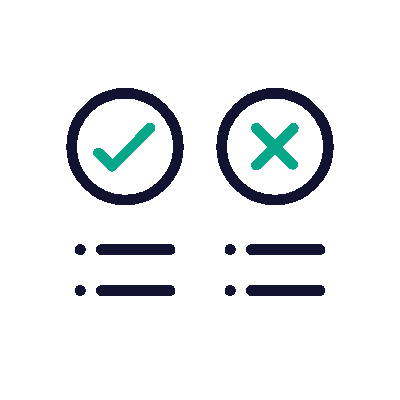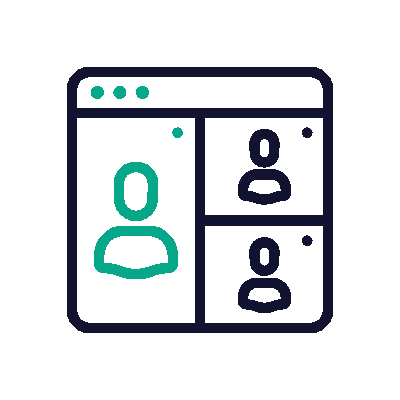University Outreach UX Research
University Outreach UX Research
As part of a larger team, I performed user research on a new outreach website for a large public university that was designed to help teachers, students and the general public find information about informal learning venues. Through various methods including surveys, user testing, and heuristic evaluation, we identified problems with the interface and provided suggestions to improve usability.
*Content may be blurry or redacted to preserve privacy. A detailed report was written for each method, available by request.
Project type: 4 person team
Project role: UX Researcher, stakeholder point-of-contact
Project length: 4 months | 2022
Tools: Figma, Miro, Zoom, Google Suite, Canva, Qualtrics
Background
A large Midwest university was in the process of creating a new website with the goal of connecting students, local K-12 teachers and parents, and volunteers to “informal learning venues” at the university. We performed research and analysis to ensure that the website was useful, usable, and well designed.
Outcome
This website is a one-stop site to find information and learn about informal learning venues (museums, science centers, etc.). Its goal is to expand people's understanding of what resources and venues are available and what they have to offer.
We performed 6 primary research methods in order to deliver actionable findings and recommendations to our client:
Interaction map
Stakeholder and target user interviews
Comparative analysis
Survey
Heuristic Evaluation
Usability Testing
The result of these research methods was a comprehensive grouping of easy-to-implement recommendations. The most salient are included below:
Reorganize venue results list pages
We found that a lack of options to filter, sort, and view further venue information resulted in confusion and extra steps to find information.
We recommended that the search function be improved with filter and sorting features.
Restructure the top navigation bar
We found that users did not scroll through the entire homepage, resulting in them missing key website features.
We recommended that the filter feature options be moved to the top navigation bar as drop-downs.
Provide more information on venue pages
We found that information on each venue page did not allow users to quickly find the information they needed.
We recommended that venue page information be restructured using modular design and icons to better compare venues, utilizing more detailed information and anchor links.
An example view of the venue results list page
Project Goals
Users
What are the user needs and pain points for finding venues, and how could the website better help users find venue information?
Experts
From heuristic evaluations, how is the website’s functionality, usability, aesthetics, and overall user experience?
Competitors
Compared to similar websites, what is this website good at and what could be done better? How can we integrate best practices into this system?
Interaction Map
We met with website stakeholders to better understand their needs and goals, and hear their current understanding of their target users. We discovered that:
Stakeholders aimed to mainly target university faculty and K-12 educators, and secondarily, casual university students.
Stakeholders were concerned with tone and framing of content for multiple users
The goals were for the site to be clear, useful and actually utilized for finding resources and appropriate venues. They also wanted to understand user expectations.
Afterwards, we created a path for each target user group for the interactions this user would make to accomplish a specific goal. We focused on these specific journeys:
K-12 educator trying to find a botany field trip for students and receive help
A university professor assigning homework for students to learn about archaeology
A college student trying to find a fun educational activity to explore campus
After creating the interaction map, we found problem points:
The site structure is duplicated and there are many entrances to the same content
There are no maps - users can’t search by venue location
There is no way to filter venue types without changing pages
Imagery and information is limited
The three-user-task interaction map
We performed a comparative evaluation to discover how the website’s features compare to competitor features. Our research questions were:
What venue or event information do comparative products offer to help users find ILVs?
How do competitors excel in their effectiveness of search and filter functions?
We applied a direct-indirect-partial-parallel-analogous competitor framework to classify comparative products. In total 29 comparative matrices were used, centered around 5 main topics.
Venue information
Search and filter function
Event information
Other functions (booking, accounts, etc.)
Use of other medium
The findings and results from this inquiry were:
Finding 1 - Competitors display much venue detail
Recommendation 1 - Include more venue information and planning features to tailor to user needs
Finding 2 - Competitors offer functionalities like event calendars, blogs, and guidelines
Recommendation 2 - Include features that help users plan their visit, as well as for the website to increase search traffic
Finding 3 - Competitors have complex search features
Recommendation 3 - The website should include complex search and filter options to increase efficiency
Comparative Evaluation
Conduct research on K-12 educators.
Due to project constraints, we had limited access to K-12 educators, which were an important target user groups of the website. We recommend targeting at K-12 and university educators in the local area for future user studies.
For our recommendation of navigation bar improvement, we recommended that card sorting methodologies be utilized to discover the best organization and language for menu items. We also recommended heat mapping and A/B testing methodologies to find the best content placement.













